Raffles Singapore is a contemporary hideaway in the Garden City
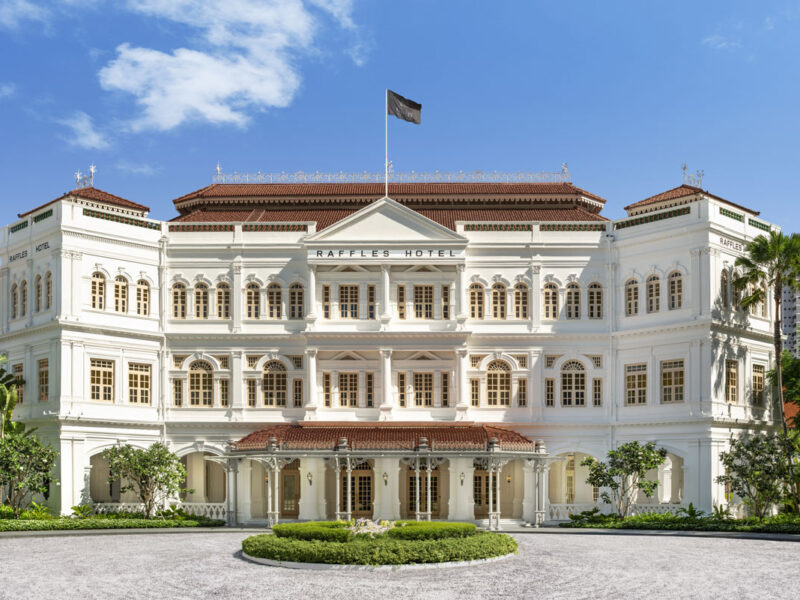
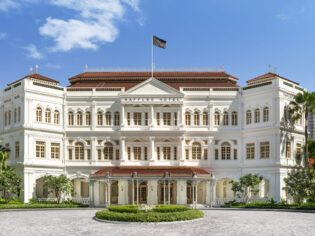
The hotel’s exterior is an icon of the city. (Image: Ralf Tooten)
One of the great heritage hotels of the world, Raffles Singapore has a storied literary legacy. But, as Imogen Eveson experiences, it is writing a new chapter too, which cherishes its history while channelling the contemporary.
“We always say the best way to get to know Raffles is to get lost,” reassures the concierge as I fumble my directions again. It’s sage advice that I follow as I tread the hallowed ground of Singapore’s most legendary hotel, which is laid out in an intricate confection of buildings and wings, courtyards and tropical gardens.
The ambience
A salve against the city’s equatorial climate, Raffles is a composite of white marble colonnades lined with lush palm trees and polished teak underfoot that lead me to the sanctuary of my suite in the Palm Court wing.
Pulitzer Prize-winning novelist James A. Michener lends his name to my refuge, one of 12 Personality Suites so called for the luminaries that once resided in them; he, surely, would have known this place like the back of his hand. So too, I ponder, Charlie Chaplin, Elizabeth Taylor and Chilean poet Pablo Neruda. A personal letter hangs in the suite dedicated to the writer William Somerset Maugham, immortalising his famous quote: “Raffles Hotel stands for all the fables of the Exotic East.”
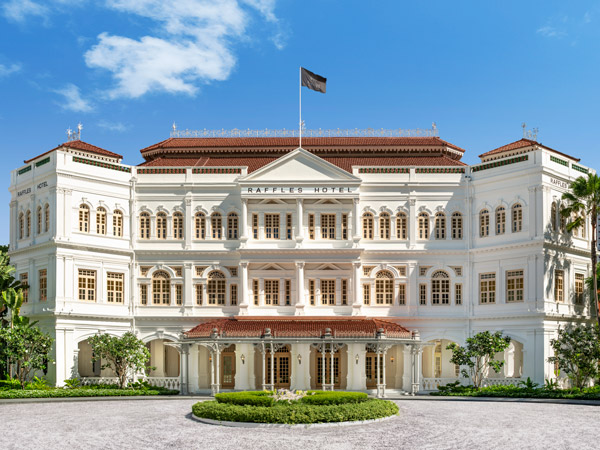
The hotel’s exterior is an icon of the city. (Image: Ralf Tooten)
History and culture
Raffles Hotel Singapore has a storied history that captures in amber the feeling of its literary past. First opened in 1887 as a 10-room beachfront hotel, it quickly became a beacon and haven for world travellers. Author Joseph Conrad, then a seaman, is thought to have been one of its earliest guests. Raffles’ popularity saw an extra wing, the Palm Court, added in 1894 and five years later, its main building – recognisable today – was constructed on the site of the original bungalow-style beach house in neo-Renaissance style, marking the beginning of the hotel’s heyday.
Today, while breezes no longer float in off the South China Sea (due to land reclamation that happened in phases), it is one of the few remaining great 19th-century hotels in the world and was declared a National Monument upon reaching its 100th anniversary in 1987. A new chapter has been written again in recent years, with a careful and sensitive restoration completed in 2019, elevating the offering to a new benchmark of contemporary luxury while preserving the all-important ambience and heritage feel.

The hotel underwent an extensive restoration completed in 2019, where modern elements blend with heritage charm.
Rooms and suites
Liveried Sikh doormen still greet guests graciously on arrival against the much-photographed backdrop of the hotel’s iconic white facade. The grand lobby is as much a statement as ever, but a dazzling new chandelier now forms the centrepiece, inspired by the lotus flower and made up of 8142 pieces of crystal.
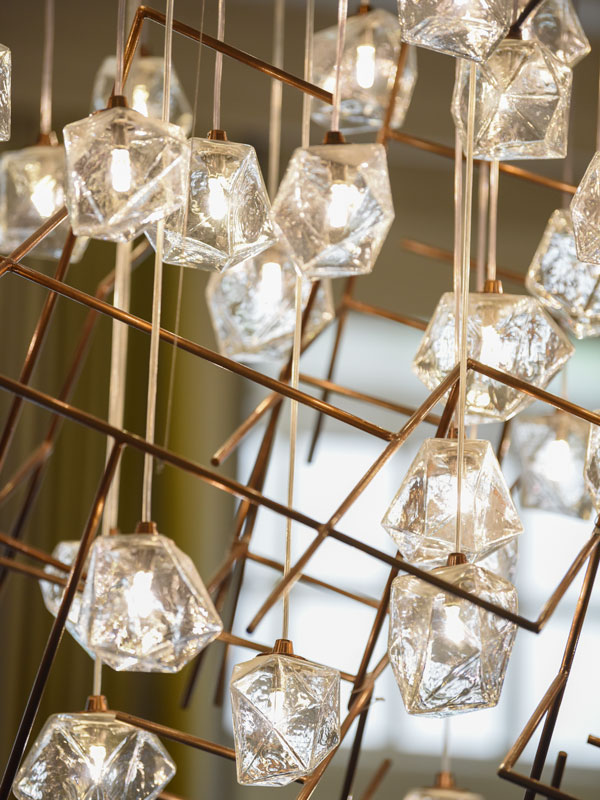
A dazzling chandelier at Raffles Singapore.
My suite encapsulates the intuitive translation from past to present that was executed in the restoration: its understated and elegant interior composed of parlour, bedroom and bathroom is all cooling dark woods, blue, cream and brushed gold contained by louvred shutters. Only now, blackout blinds and soundproofing create extra sanctuary.
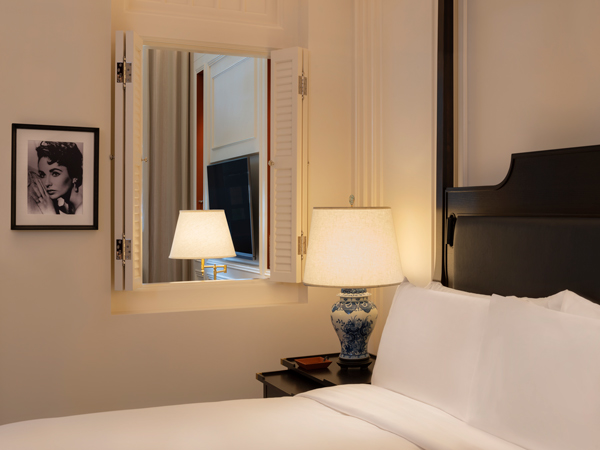
The Elizabeth Taylor Suite is named after the actress who twice resided at the hotel – there are 12 ‘Personality Suites’. (Image: Ralf Tooten)
From my four-poster bed, I use an iPad to control lights and book a treatment at the new Raffles Spa. The redesigned bathroom boasts Peranakan-inspired marble flooring and the legendary Raffles butlers are still on hand; I follow a hot tip and ask them to draw me a bath for my return from dinner.
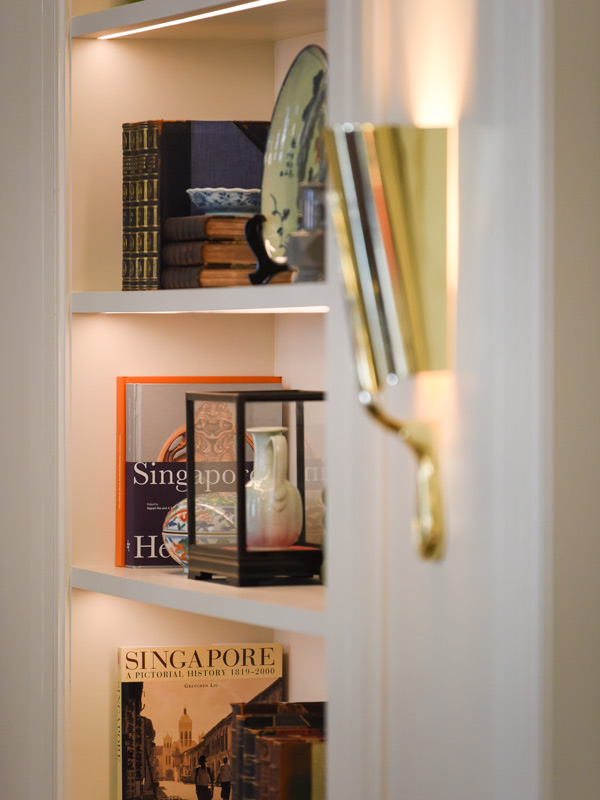
Expect elegant, thoughtful touches in the suites.
Food and drink
New culinary concepts were introduced during the redesign to appeal to hotel guests and Singaporeans alike. There’s elevated wood-fire dining at Butcher’s Block and French fine dining from Michelin-starred chef Anne-Sophie Pic at La Dame de Pic. Today a hub in the heart of the city, the hotel is at once removed yet inherently part of its DNA.
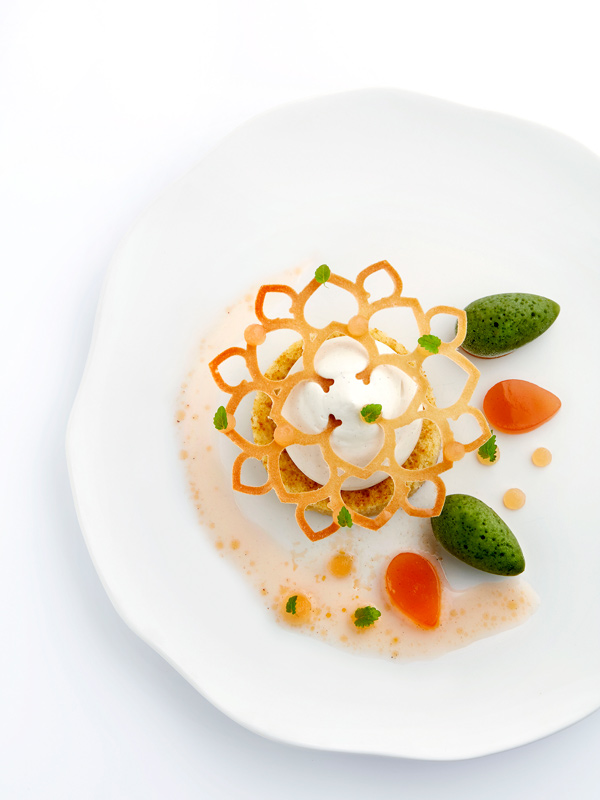
Dine at La Dame de Pic.
The lunchtime buzz at yì by Jereme Leung on a rainy Sunday attests to this: helmed by the eponymous Master Chef, the contemporary Chinese restaurant is a hit. But the classics remain – no visit would be complete without a Singapore Sling in the Long Bar, where the famous cocktail was created in 1915.
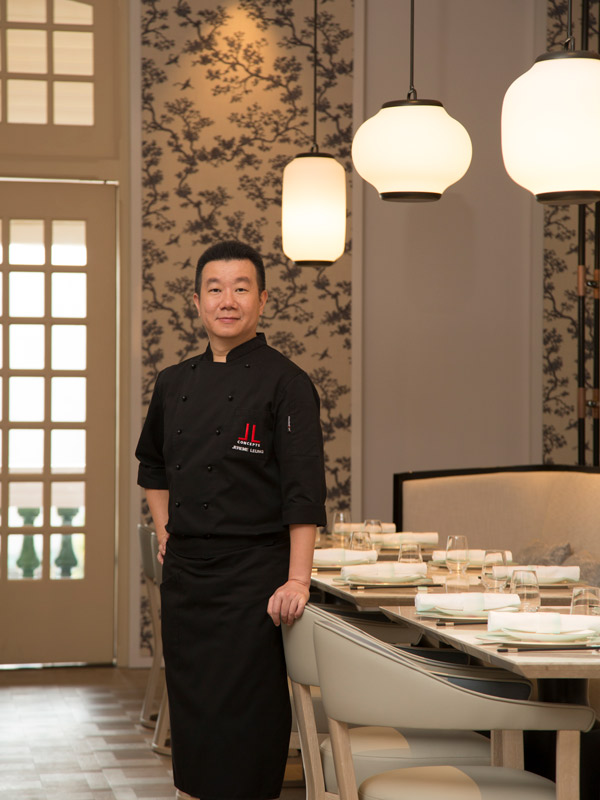
Chinese restaurant yì by Jereme Leung is helmed by the Master Chef himself.
And the Writers Bar still proves a lure. Its original incarnation was in the lobby, and “here,” says resident historian Nazir Yusof during a tour of the hotel, “writers had plenty of time to sit and watch guests come in and out, listening to gossip and finding inspiration for their stories.”
The famous bar has been relocated, embellished and expanded to a full bar serving craft cocktails and paying tribute to the hotel’s literary luminaries throughout a curation of mementos and books. And it is continuing its legacy with a new program of writers in residence.
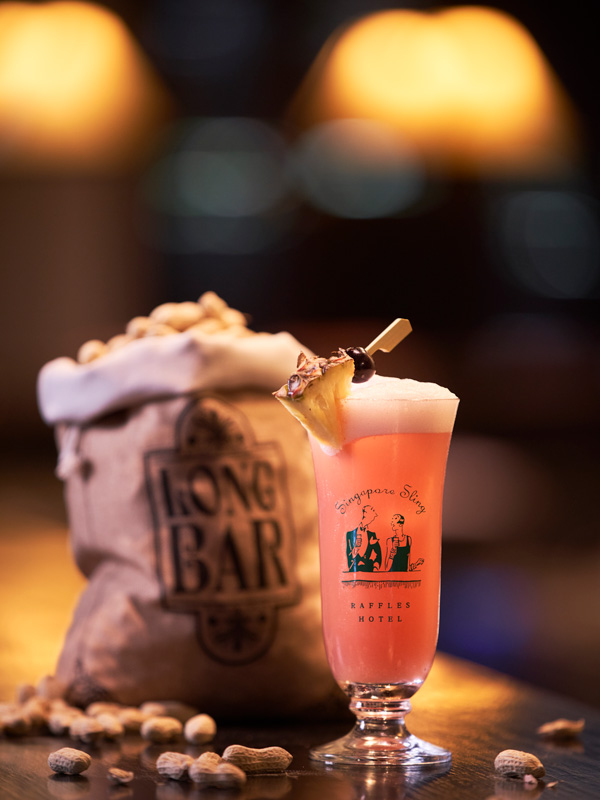
The Singapore Sling, regarded as the national drink, was created in 1915 in the Long Bar.
Final verdict
Has anyone who imagines themselves a writer ever come to Raffles and not tried to bottle that feeling? The feeling of time being slow. The heat resolved to steady you to a languid pace and lull you into the rhythm of a slow-moving ceiling fan. To notice the details. To have thinking space, room to breathe and revelations you might just commit to paper. My favourite spot is on the wide teak verandah outside my suite overlooking the lush Palm Court, where I sit in the morning with a cup of coffee, pen and paper in hand. On Raffles time.
After I check out, I return to the Tiffin Room for lunch, craving the palak paneer I’d eaten hungrily when I arrived here two evenings before, but with more time now to soak in the finely calibrated interiors and atmosphere of my surrounds. This elegant dining room soundtracked by the tinkling of piano keys traces its roots back to 1892.
Its walls are lined with exquisite old tiffin boxes and Chinese porcelain and the restored interior includes reinstated wooden floorboards to echo its early incarnation when it opened onsite as one of the first Indian restaurants in Singapore. I may not be lost anymore, but I can’t bring myself to find my way out of Raffles just yet.
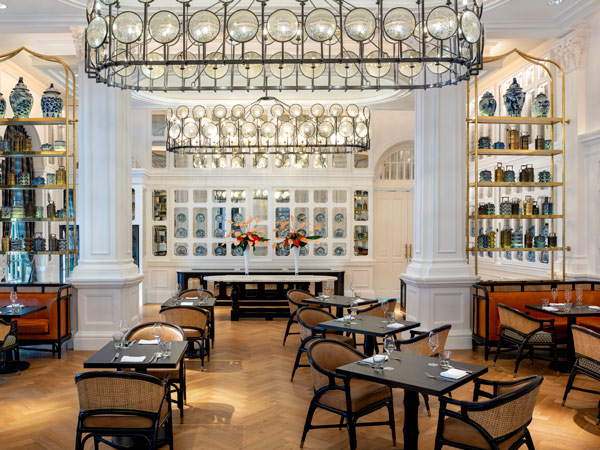
North Indian cuisine has been served in the Tiffin Room since 1892. (Image: Ralf Tooten)
Getting there
Raffles Hotel Singapore is located in the CBD, a 20-minute taxi ride from Changi Airport, or an easy train journey on the MRT to City Hall station.
Eating there
Raffles is home to nine restaurants and bars, from the historic Tiffin Room to the contemporary steakhouse butcher’s block. Enjoy high tea in the grand lobby and a rite-of-passage Singapore Sling in the long bar.
Playing there
Visit the iconic gardens by the bay, a masterpiece of architecture and garden artistry, and its ethereal indoor Cloud Forest. Browse some of the 8000 pieces of art in the sprawling National Gallery Singapore. Explore the city’s oldest urban quarter Kampong Glam, where you’ll find an array of street art and culturally rich arab streets where stalls sell vibrant Persian carpets and fabrics. Wander along Orchard Road, the city’s famous shopping strip.
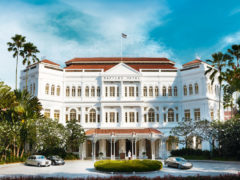
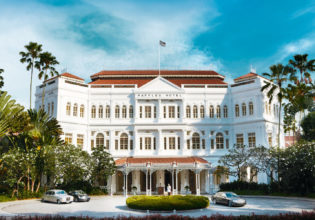
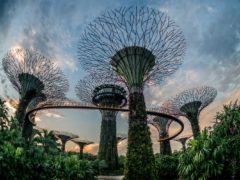
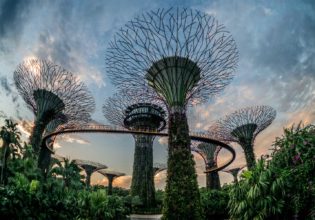
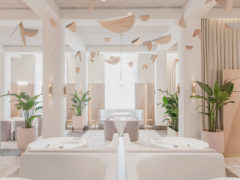
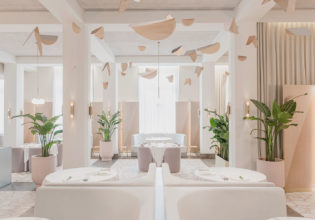

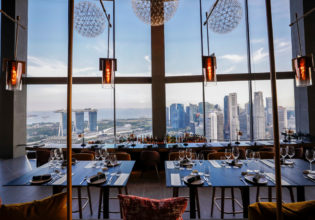
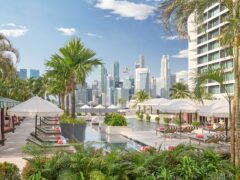
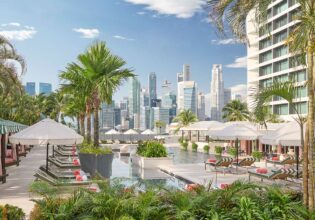
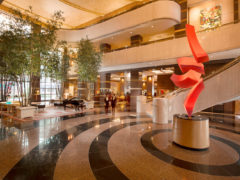
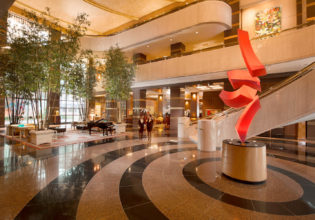

LEAVE YOUR COMMENT